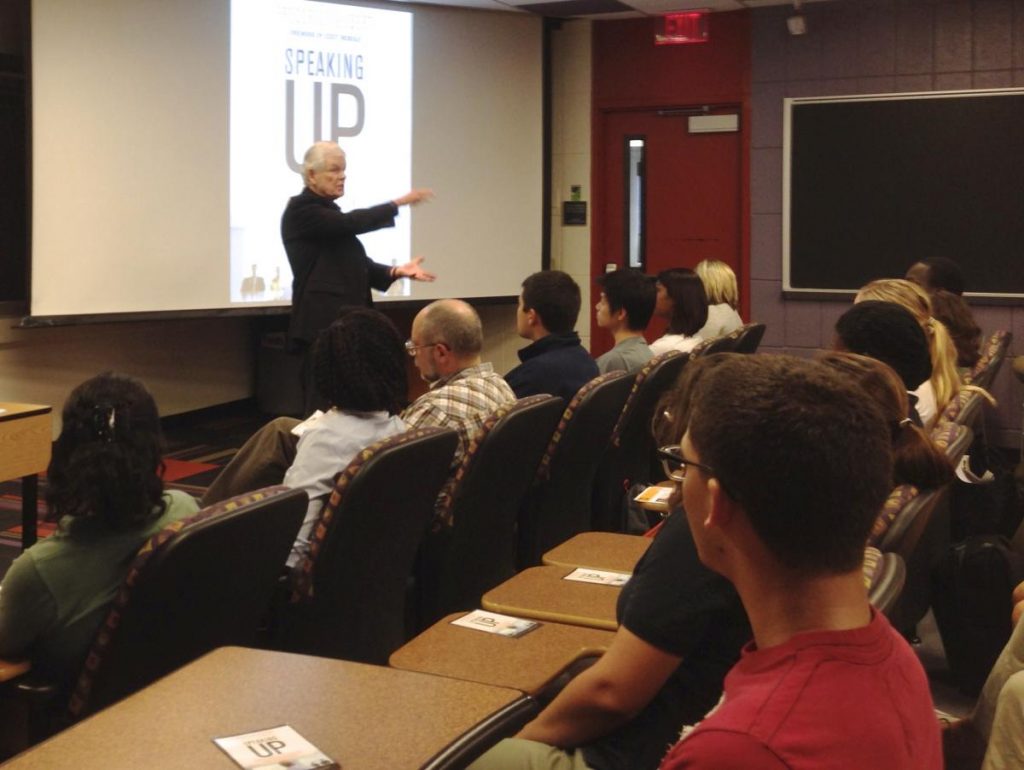
It was my pleasure Wednesday to present Speaking Up to 150 engineering students at Penn State. There is a revolution happening at that school led by presentations guru Michael Alley, author of The Craft of Scientific Presentations. Michael, and the engineering department, are committed to the idea that engineering students should leave school being able to write and speak at a very high level. The school even sponsors a speech contest in engineering. One professor said that because of this emphasis their students are more likely to get good job offers at graduation.
The presentation was at 6:00PM and the room was packed. Standing
room only. Why? Because Michael and his team, Melissa Marshall, and Christine Haas told their
students this would be useful information for their careers after graduation. The audience was
lively and responsive. A pleasure to present to.
While I think these students DO recognize it, I emphasized that an engineering program that
focuses on communication is very rare and that these skills will set them apart.
Here are some of Michael’s key points:
* Microsoft has been the dominant force in this area for 20 years. They have 95% market share.
Why change?
* People are growing tired of the way PPt is used and are looking for
something more effective.
* Michael’s work is based on statistically significant recommendations, i.e. assertion headlines create
better understanding and longer retention
A few of his recommendations:
– Sentence headline at the top left of the slide show tell the audience what the purpose of the slide is.
He told me later in a taped interview that writing these sentences helps the presenter understand at
a deeper level what the meaning is. So it is for you as much as for the audience. (I’ll be happy to send you this 5 minute
interview. Just email me a request: rick@powerspeaking.com.)
– Only use animation if it helps understanding
– Signal to noise ratio – keep slide background simple and clean, i.e. no logos, page numbers, unnecessary grid
lines, etc.
– Resist PPt default designs.
– Use graphics on every slide: charts, photos, graphs, etc.
– Use slides only if they help with audience comprehension.
– Slides are not the same as handouts.
Michael’s new book, The Craft of Scientific Presentations, vol. 2 goes into much more detail. His team is in huge demand for speaking dates. People are tired of the old way. There is a revolution that is starting at Penn State and spreading across the presentation landscape, orchestrated by Michael Alley. I was honored to do my small part to support it.
P.S. How to point to the screen? Here is REAL DATA, N = 150. I did a survey during my talk. Which do you prefer when a speaker points to the screen? Hand? Laser? Mechanical Pointer? By applause, the winner: the hand. Laser = zero applause. Many liked the pointer, but the winner by a small margin, the hand. Skip the laser.



